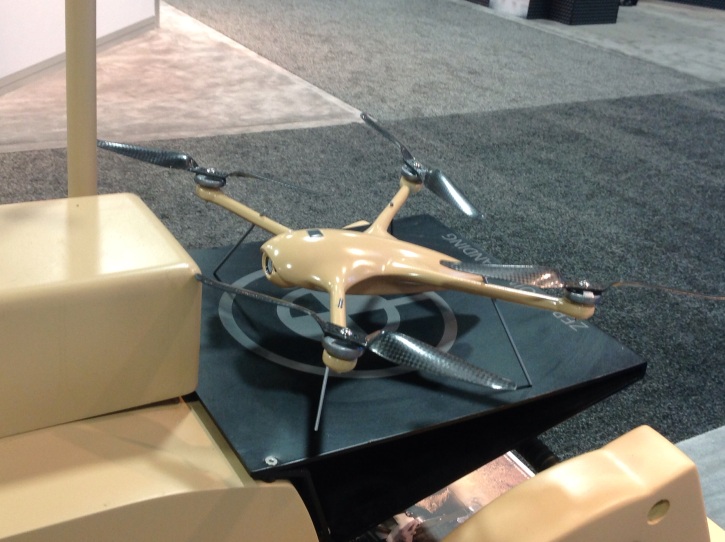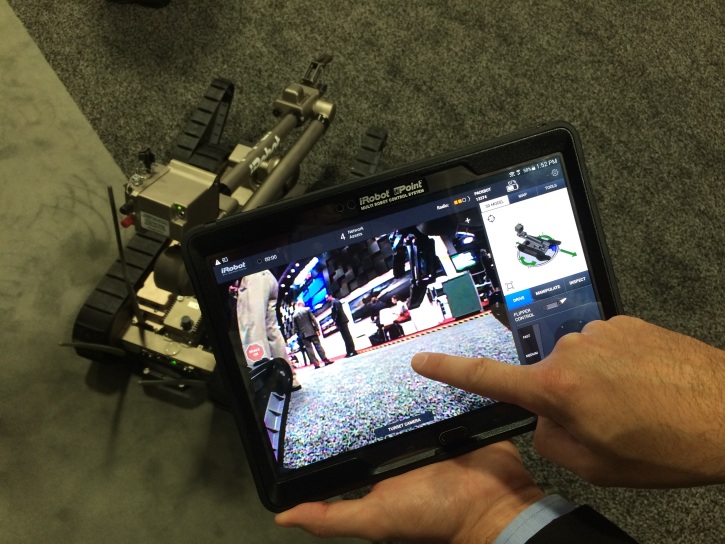
QinetiQ NA and IAI are cooperating in the development of an advanced combat engineering robot, based on remotely controlled Bobcat developed by QinetiQ.
The Israeli variant is different from the U.S. Minotaur in its higher
autonomy and more comprehensive sensor range. The vehicle on display,
called SAHAR uses dedicated IED detecting sensors, and provides a
‘mothership’ for two additional robotic systems – a Dragon Runner and
Hoverlite 4, yet to be announced multirotor drone developed by IAI. Photo: Noam Eshel, Defense-Update

A 1:4 scal model of IAI’s
Hoverair 4 multi-rotor unmanned aircraft deployed on a small landing
pad on the unmanned combat engineering robot. The UAV will be used to
provide remote operators a close-in view of the vehicle and operation
scene scene, to better operate the payloads on board. The vehicle will
also have a Talon robot for ground to remotely control activities that
require fine activities on the ground.

QinetiQ North America unveiled at AUSA 2014 the new Talon V robot, an IOP compliant redesign of the Talon,
offering customers the freedom to add, change, adapt or upgrade sensors,
payloads and some support systems with very short integration, leading
to much lower life cycle costs. The Talon V on display received a
stronger manipulator arm with heavier lift capability, higher degree of
freedom and and improved grip force, an autonomy unit, camera, HD video,
a 2 way hailed and more. The robot is now radio agnostic, capable to
integrate compatible 3rd party radios. The control console received
graphical user interface enhancement offering more automation functions
and user defined programmable presets.

IRobot introduced at AUSA 2014 the MPoint, an application developed by the company, to enable users controlling any iRobot
robot without having to learn to operate the specific controller of
that device. At the exhibition visitors could operate the Firstlook, or
PacBot through an Android based controller, tapping into the available
asset through a radio network that can simultaneously run up to four
robots. The app provides user friendly, intuitive controls simplifying
the use of robots to non trained users.

Talon
V also supports a new operator display provides redesigned, more
intuitive operation using standard display devices.

Boeing displayed a scale model of its Phantom Swift design, using four ducted fan propulsion systems. The design was proposed by Boeing for the DARPA X VTOL plane challenge.

An impressive view of the Roboteam robot stable at the Israeli pavilion at AUSA 2014.

MTGR demonstrates its firm grip at AUSA 2014. Photo: Noam Eshel, Defense-Update

Post a Comment Blogger Facebook Disqus